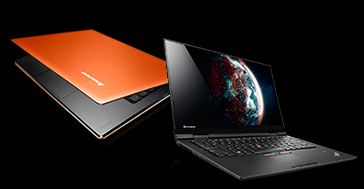Industry tech expos are generally the place to go if you want a glimpse of the near future of gadgets, and this was the case with the recent Consumer Electronics Show (CES) in Las Vegas. Here, all manner of devices were showcased, from submersible phones to massaging neck pillows. Importantly, it was also where we got our first glimpse of how the ultrabook market will develop in the future, with Intel making key announcements regarding new specifications and with a variety of new devices having been unveiled.
Intel has, of course, always been the driving force behind ultrabooks, having offered manufacturers $300 million in 2011 to develop lightweight, high performance laptops that would act as Windows-based rivals to the Macbook Air. Now, consumers looking for the best ultrabook are spoiled for choice, with options produced by Lenovo, Samsung, Asus, and Acer, among others. Indeed, the name ultrabook is still an Intel trademark; to use it, manufacturers must comply with a series of regulations, including rules about the use of an Intel processor and rules that prescribe thickness and levels of performance. In short, in the world of ultrabooks, what Intel says, goes.
Vitally, there is a real prospect that the best ultrabook of the next few years will have real world all-day battery life, with Intel claiming that its new Haswell chip (which is due in late 2013) will allow manufacturers to push their battery power to the point where you can genuinely leave your charger at home, safe in the knowledge that your ultrabook will keep on going.
Touchscreens are another key area, with Intel planning to mandate that all new ultrabooks equipped with the Haswell chip must have a touchscreen to work in tandem with the traditional keyboard and trackpad. Many see this move as a response to Windows 8, which is clearly designed for touch over traditional inputs; in some ways, it signals a sea change in mobile computing, with the interface of choice switching from keyboard and mouse to a touchscreen. When questioned about this move, Intel indicated that it was the manufacturers who were pushing for touchscreens, no doubt fearful that to a new generation of consumers raised on smartphones and tablets, a non-touchscreen device would seem almost unbearably antiquated.
Interestingly, Intel also seems to be very excited about their “power nap” system, a connected standby mode that would allow apps and programs on the new wave of Windows 8 ultrabooks to run tasks such as email fetching and updating downloads while the computer is on standby, effectively offering instantaneous access to key functions. With this system expected to be extended to third-party developers, we could be entering an era of computing where even traditional programs run like apps – toiling in the background and only making their presence felt when they have something to say.
Another big idea is WiDi – Wireless Display. Despite having been around since 2010, Intel’s proprietary screen sharing technology has never really taken off; possibly because it requires not only a WiDi-equipped laptop, but also a compatible TV or a dedicated adapter. With the adapter costing $100 and a tiny fraction of TVs supporting WiDi, few deemed it worth the effort and WiDi effectively sank without trace.
Now, there are indications that the new generation of WiDi will support Miracast, a new screen sharing system that is seeking to be a low cost alternative to Apple AirPlay and become a new industry standard for mobile devices, laptops and TVs. This suggests that very soon, almost all users will be able to throw video and audio from their mobile or laptop to their TV, eliminating the need for a lengthy HDMI cable trailing across the living room. However, it remains to been seen to what extent Intel will support Miracast, and to what extent it will try to impose WiDi across the industry in a bid for control of an important new area.
The chip manufacturer is also addressing the problem with screen resolution on convertibles, with many users having found that high resolution screens result in tiny icons which are difficult to control with a touch interface, but that lower resolutions mean the display looks fuzzy up close. Intel’s solution was showcased in the North Cape reference device proudly displayed at CES, which reduces the size and resolution of the display when the screen is taken out of its dock and becomes a tablet. Effectively, the edges are blacked out, so what was a 13.3 inch ultrabook becomes an 11.6 inch tablet, with each display state optimized for its intended use.
Finally, in terms of ultrabooks actually showed off at CES, it is clear that the line between laptop and tablet is becoming increasingly obsolete, with practically every new ultrabook having the ability to remove the screen from the keyboard dock to be used as a tablet. Lenovo’s new ThinkPad Helix was typical of this trend; it is no doubt not only a response to the new-found obsession with tablets, but also to the fact that Microsoft’s near ubiquitous Surface marketing has made the idea of a docking tablet desirable for consumers. It was natural, therefore, for laptop manufacturers to flip this idea on its head, from a docking tablet to a laptop where the screen can be unmoored.

